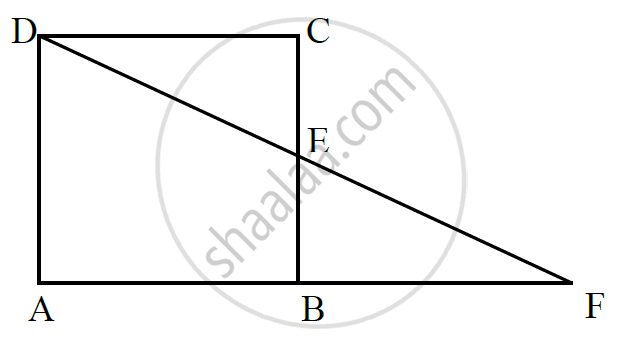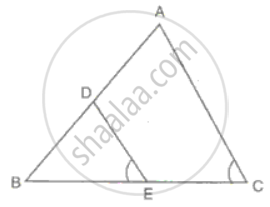Advertisements
Advertisements
प्रश्न
Prove that the figure obtained by joining the mid-points of the adjacent sides of a rectangle is a rhombus.
उत्तर

Given: Let ABCD be a rectangle where P, Q, R, S are the midpoint of AB, BC, CD, DA.
To Prove: PQRS is a rhombus
Construction: Draw two diagonal BD and AC as shown in figure. Where BD = AC
(Since diagonal of the rectangle are equal)
Proof:
From ΔABD and ΔBCD
PS = `1/2` BD = QR and PS || BD || QR
2PS = 2QR = BD and PS || QR ...(1)
Similarly, 2PQ = 2SR = AC and PQ || SR ...(2)
From (1) and (2) we get
PQ = QR = RS = PS
Therefore, PQRS is a rhombus.
Hence, proved.
APPEARS IN
संबंधित प्रश्न
In below fig. ABCD is a parallelogram and E is the mid-point of side B If DE and AB when produced meet at F, prove that AF = 2AB.

Fill in the blank to make the following statement correct:
The figure formed by joining the mid-points of consecutive sides of a quadrilateral is
In ∆ABC, E is the mid-point of the median AD, and BE produced meets side AC at point Q.
Show that BE: EQ = 3: 1.
In ΔABC, D is the mid-point of AB and E is the mid-point of BC.
Calculate:
(i) DE, if AC = 8.6 cm
(ii) ∠DEB, if ∠ACB = 72°
Prove that the figure obtained by joining the mid-points of the adjacent sides of a rectangle is a rhombus.
Prove that the straight lines joining the mid-points of the opposite sides of a quadrilateral bisect each other.
Side AC of a ABC is produced to point E so that CE = `(1)/(2)"AC"`. D is the mid-point of BC and ED produced meets AB at F. Lines through D and C are drawn parallel to AB which meets AC at point P and EF at point R respectively. Prove that: 3DF = EF
AD is a median of side BC of ABC. E is the midpoint of AD. BE is joined and produced to meet AC at F. Prove that AF: AC = 1 : 3.
ABCD is a kite in which BC = CD, AB = AD. E, F and G are the mid-points of CD, BC and AB respectively. Prove that: ∠EFG = 90°
In ΔABC, the medians BE and CD are produced to the points P and Q respectively such that BE = EP and CD = DQ. Prove that: A is the mid-point of PQ.
